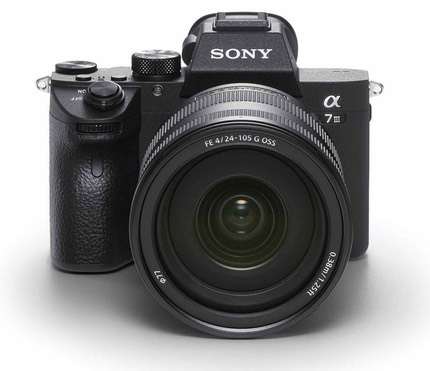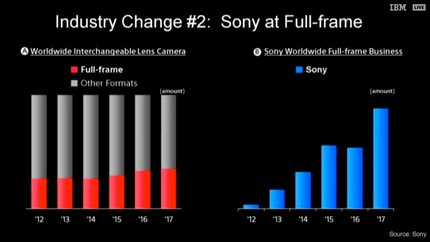At the trade show for wedding and portrait photographers in Las Vegas (WPPI) Sony today revealed the third iteration of the A7 (no r, no s) model, the A7M3. As you might guess, it bears a strong resemblance to the way the A7r third generation update was made: add the joystick, double up the SD slots behind a door lock (though mismatching UHS-II and UHS-I slots), change to the bigger battery, adjust the grip a bit, add no crop 4K video.

In other words, a modest set of feature-level changes, but all ones that make the camera a better handling shooter overall. Indeed, Sony launched the camera as "The Basic Model Full Frame" camera. Of course, that was quickly followed by "expect more."
The more basically seems to be centered around the sensor, which may be a differentiated one from the A9. It's a BSI design with 93% phase detect coverage, which sounds an awful lot like the A9. What it doesn't seem to have is as much offload bandwidth, which means that the "stack" isn't there. Sony was touting 177 JPEG image buffer at the launch (with 10 fps capture, either mechanical or silent electronic shutter).
At US$2000, Sony's price for the new A7M3 body is slightly on the unaggressive side, just above the Canon 6D Mark II and Nikon D750 (at least when those models aren't on discount).
The interesting thing is that Sony appears to be doing the Nikon thing Nikon did a few years back: shore up their full frame line while mostly neglecting the APS-C line. We've now got the A7M3, A7rM3, and A9 as relatively new models, with the A7sM2 likely to gets its update later this year or early next. That's four full frame sensor bodies ranging from US$1800 to US$5500, a very similar pattern to what Canon and Nikon have been doing in full frame.
On the one hand, this upscale approach Sony has been on has put them on relatively even keel with the DSLR duopoly and boosted margins within the group. On the other hand, Canon has whittled away Sony's early mirrorless unit volume lead with crop sensor models, with Nikon about to join the fray.
While the lower volume full frame market is safe, profitable, and currently functionally only has three players so makes the sell easier, the overall ILC camera market will heat up again lower down the lineup, most likely in the US$700-1200 range for ILC cameras. Sony still has work to do there, both with camera options and lenses.

During the media presentation to launch the camera, Sony also made the point that they have the largest share of the mirrorless market, and was growing more rapidly than the full frame market. Both these figures, however, are Sony-internal data, and apparently based upon "value." I put that word in quotes, because we have to remember that Sony is also still selling the original A7 at US$800 at the moment.
Tomorrow Sony gets another boost, as Sigma announces nine new lenses for the FE mount (14mm f/1.8, 20mm f/1.4, 24mm f/1.4, 35mm f/1.4, 50mm f/1.4, 70mm f/2.8, 85mm f/1.4, 105mm f/1.4, and 135mm f/1.8 Art lenses). How the heck is Sigma managing to put out so many lenses in the FE mount simultaneously. Well, the trick here is that these are all existing DSLR lenses, onto which Sigma "bolts on" a permanent variation of their MC-11 adapter.
Meanwhile, Sony has reintroduced it's trade-in bonus program [advertiser link].
